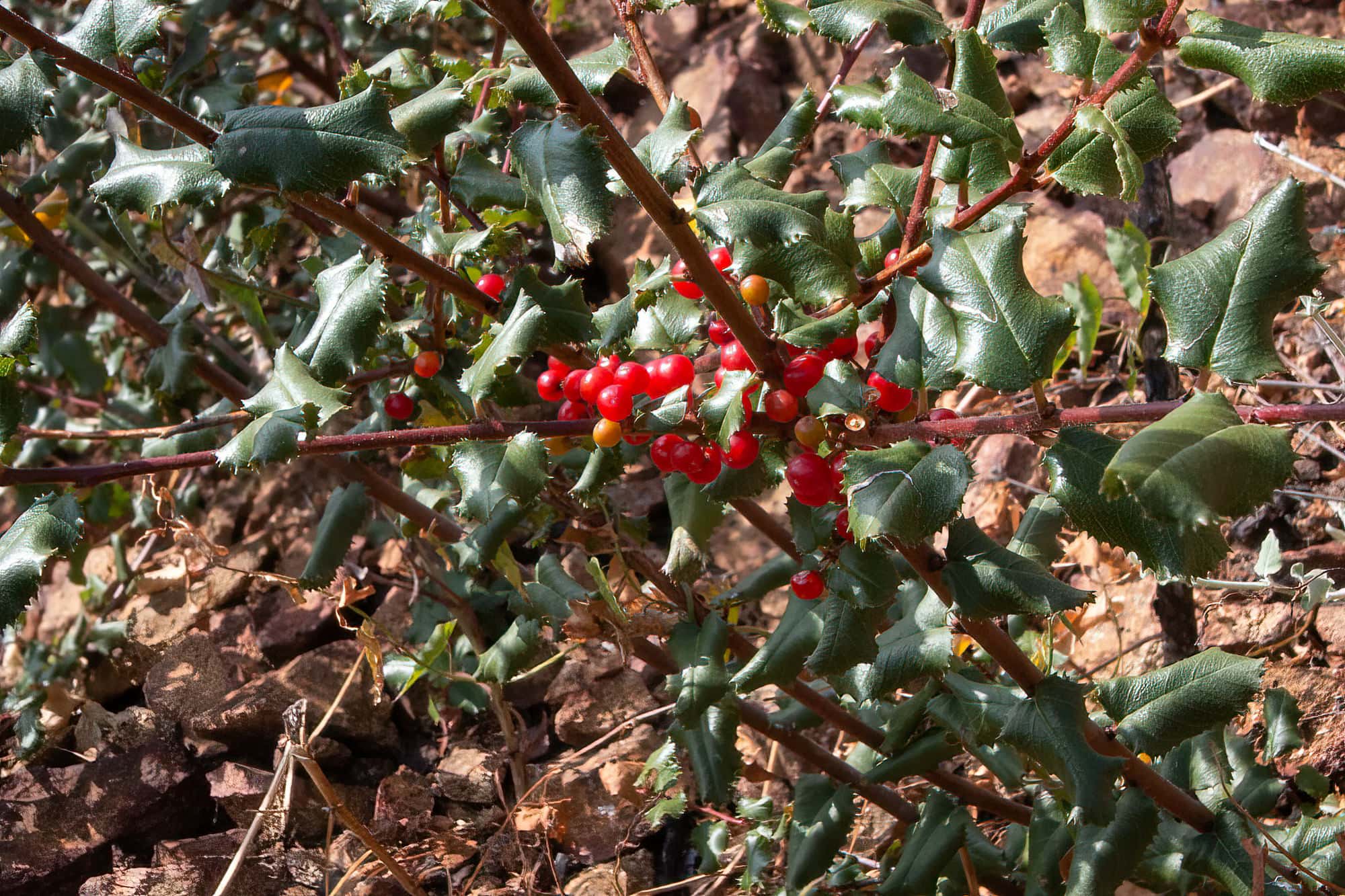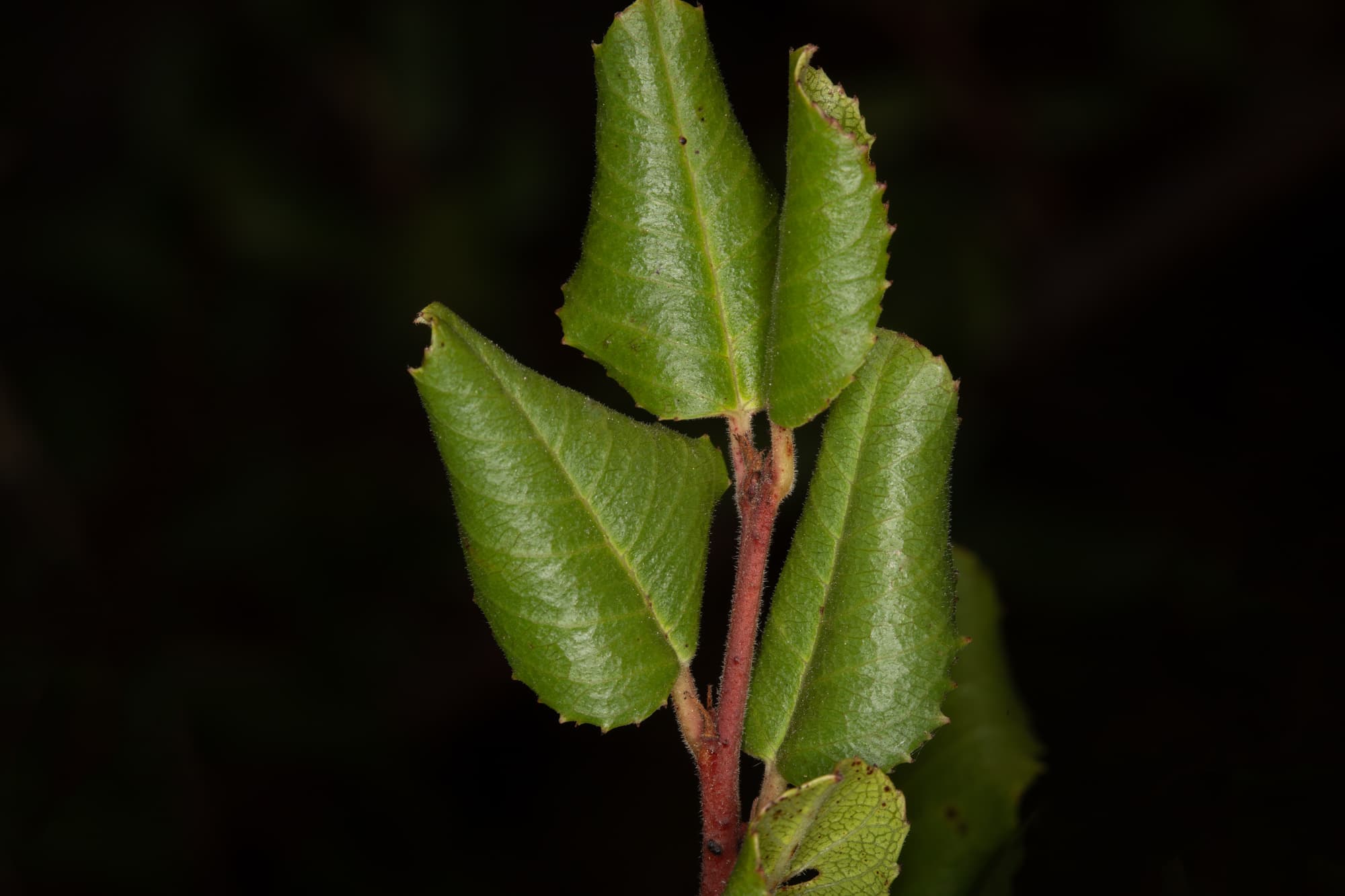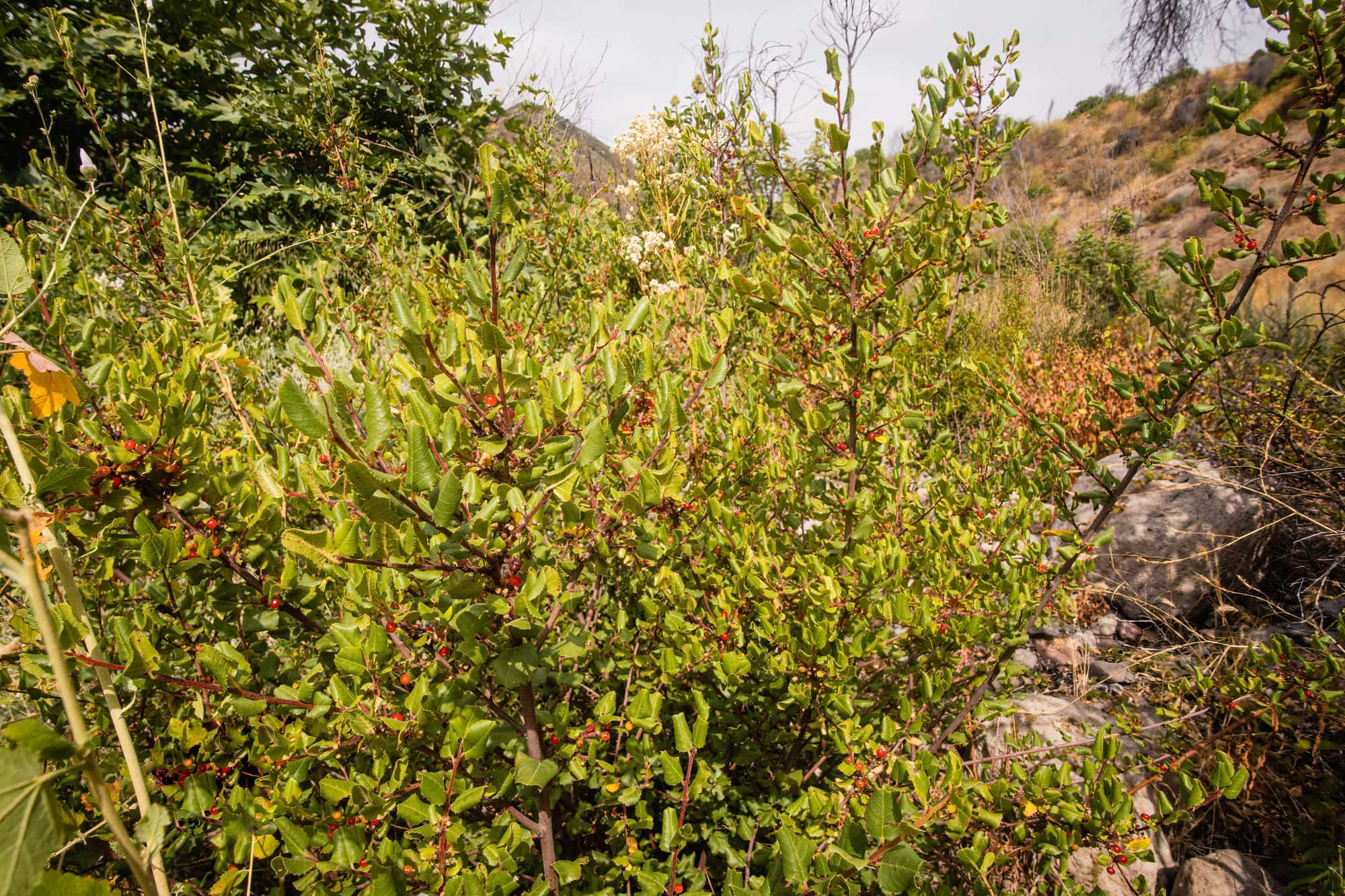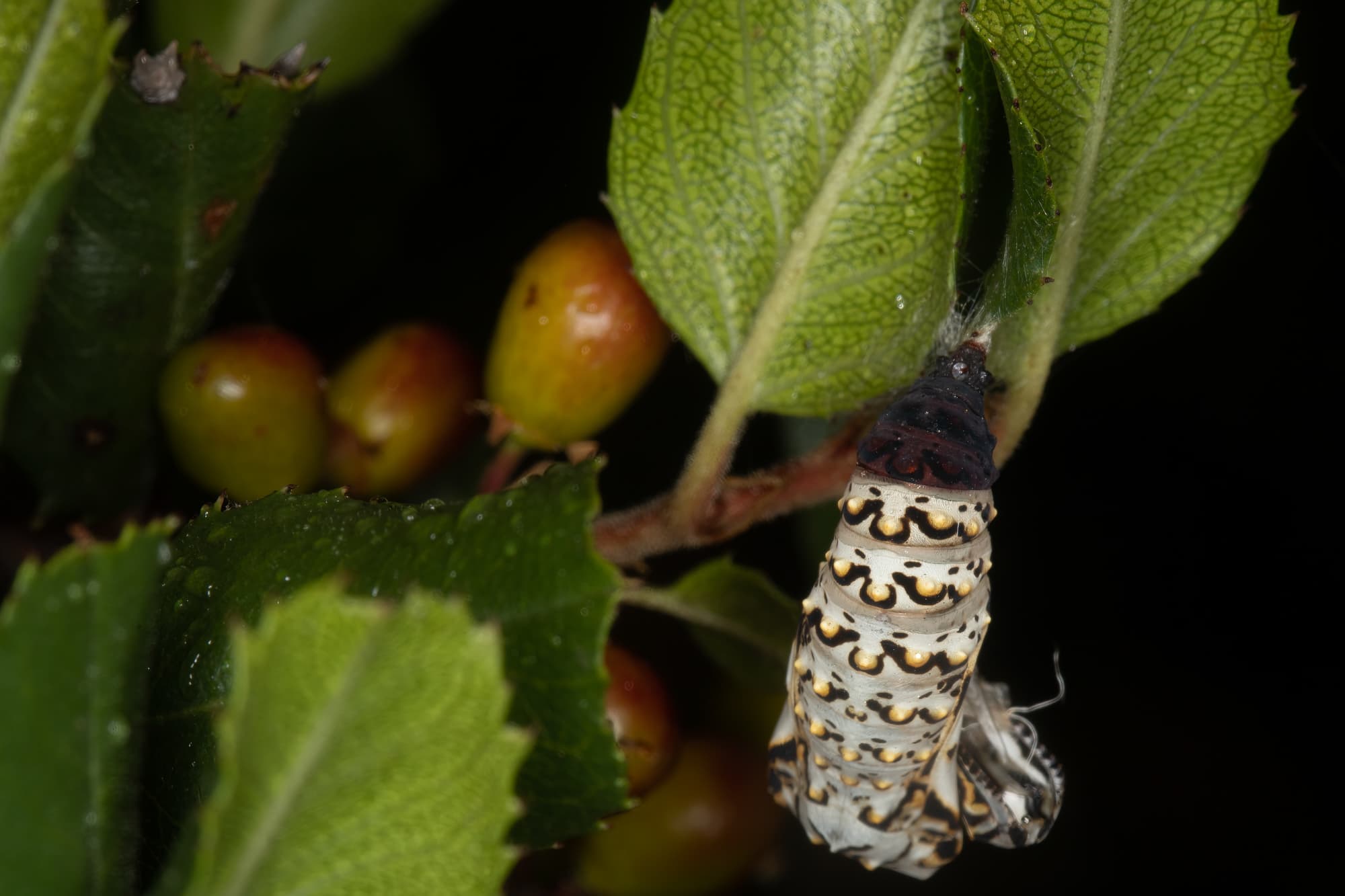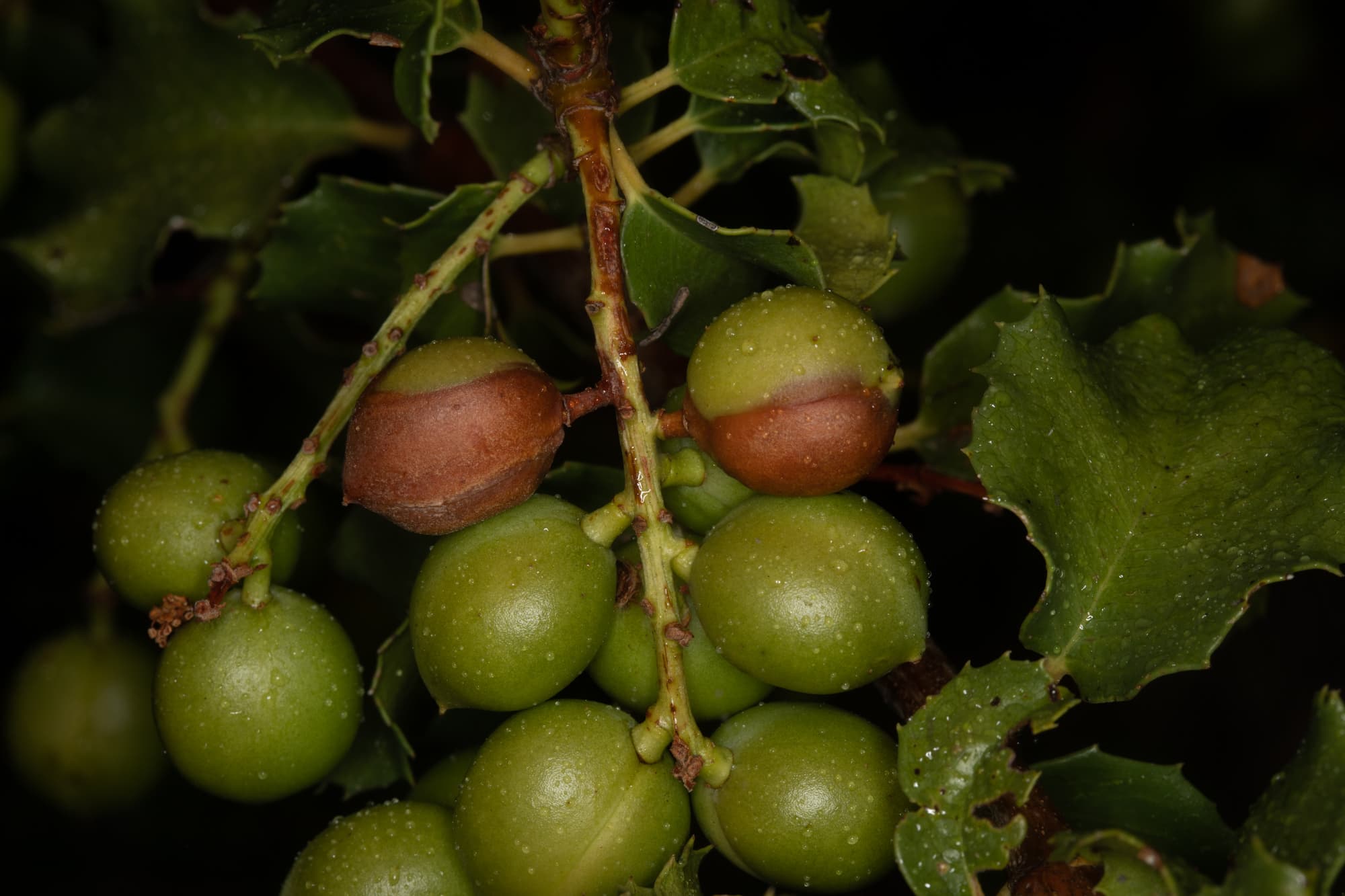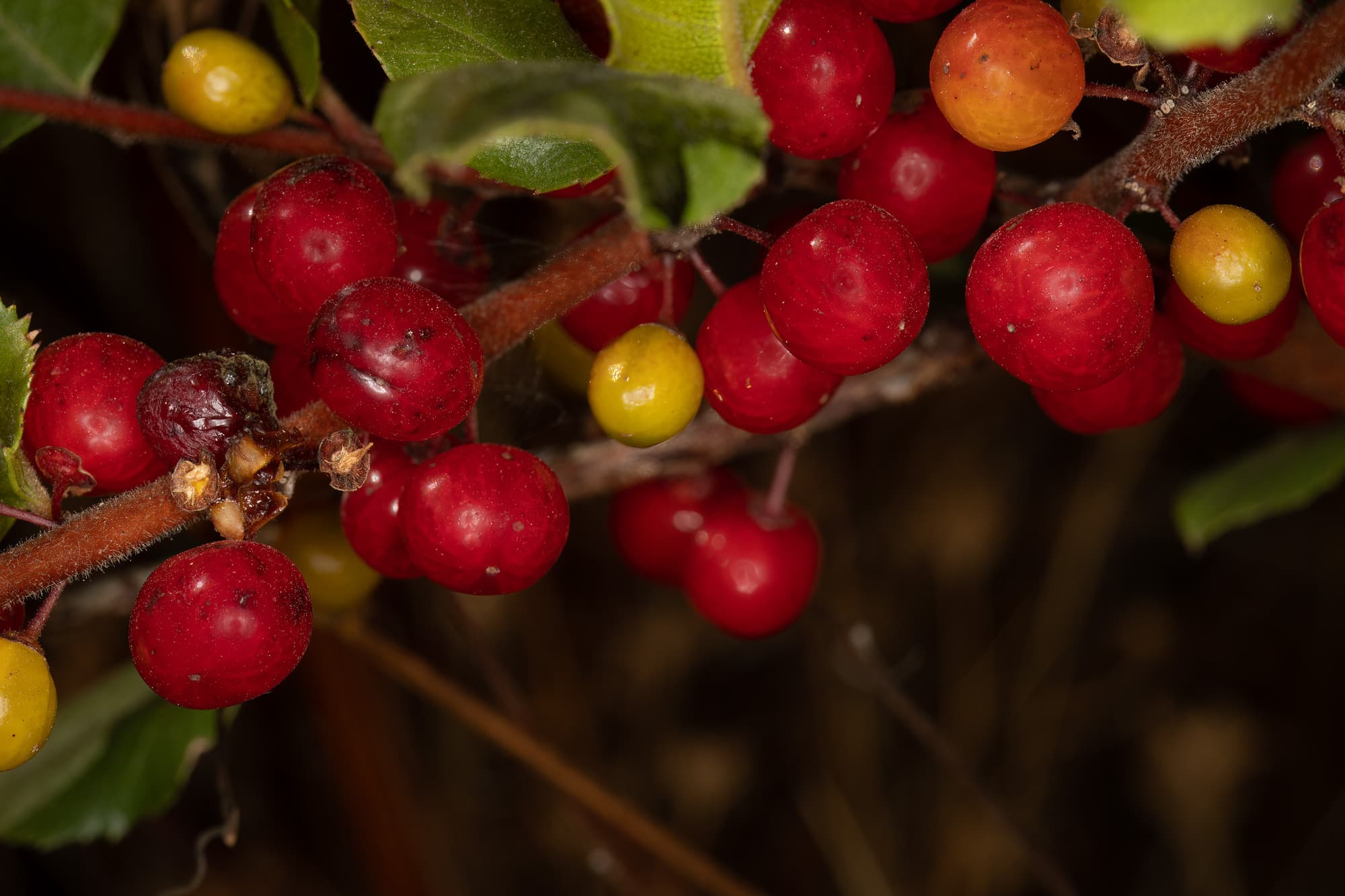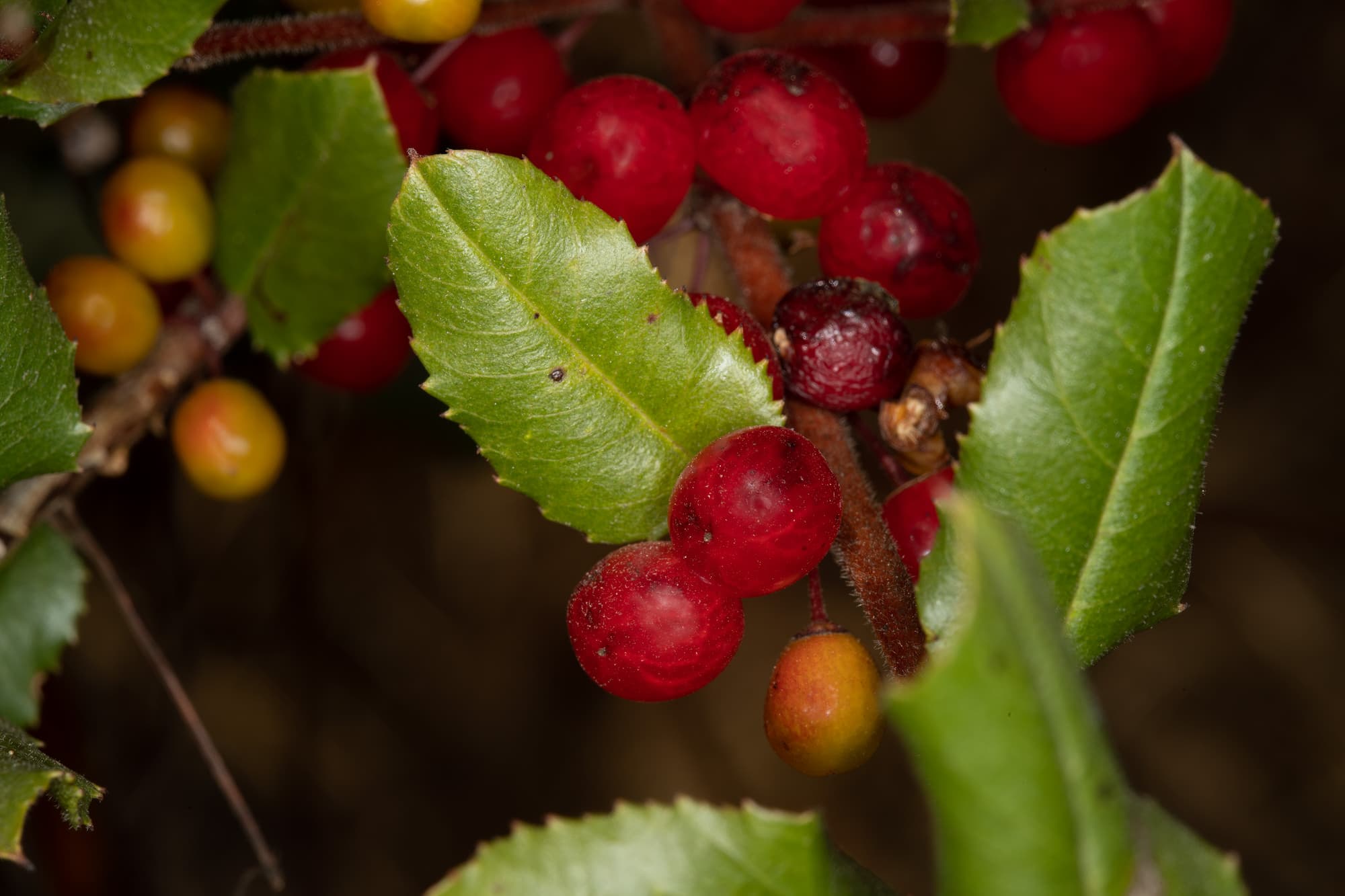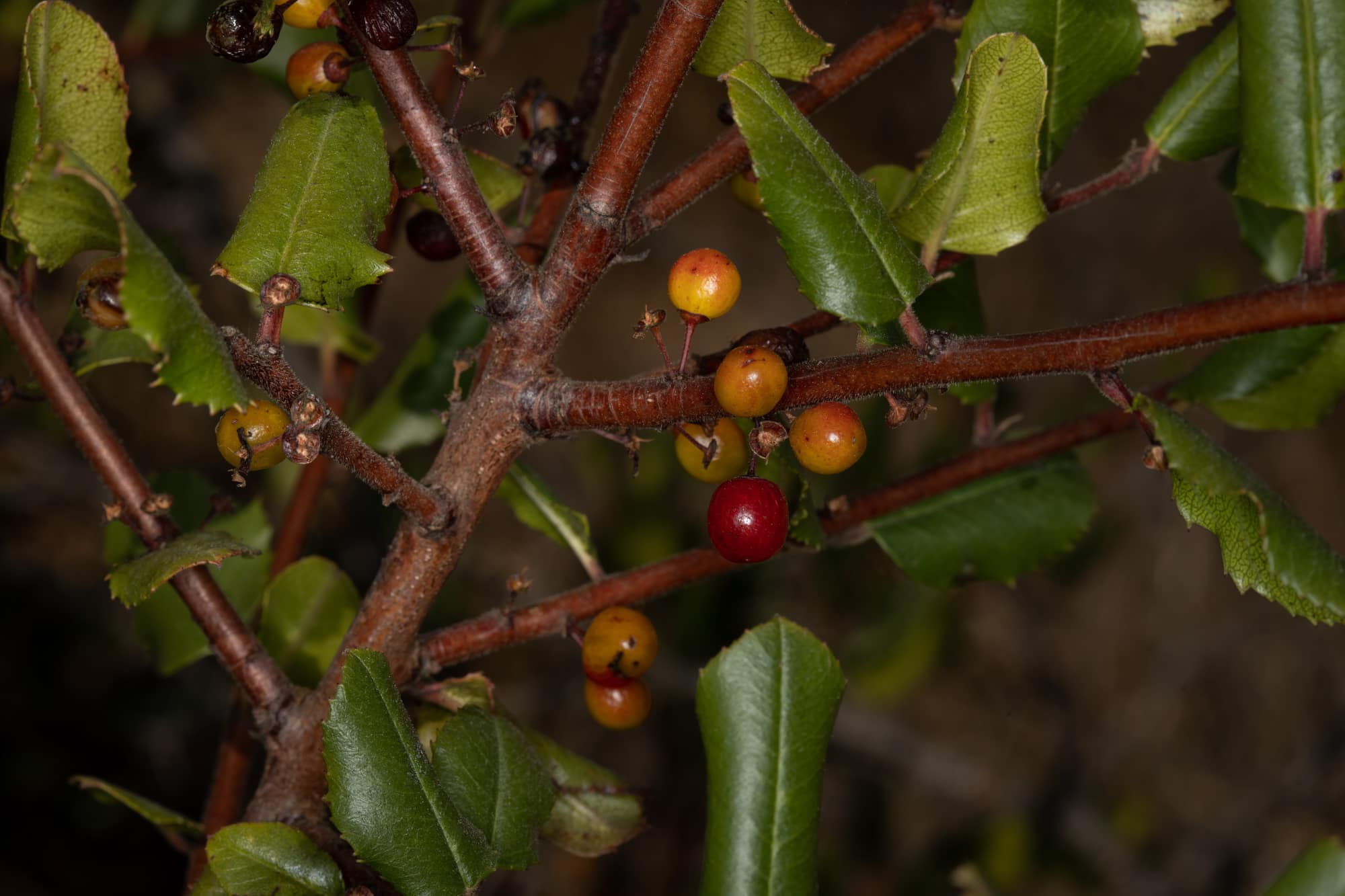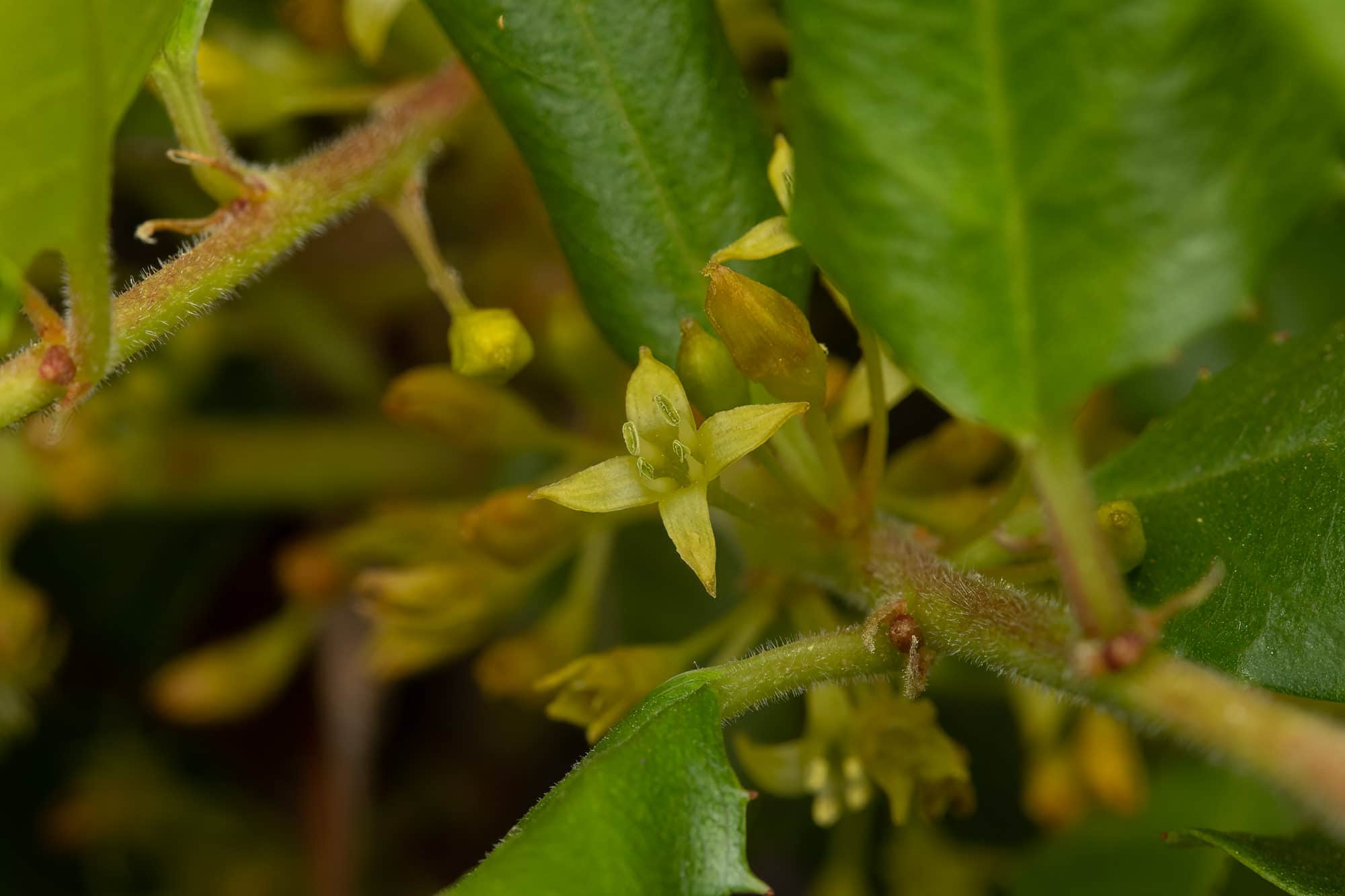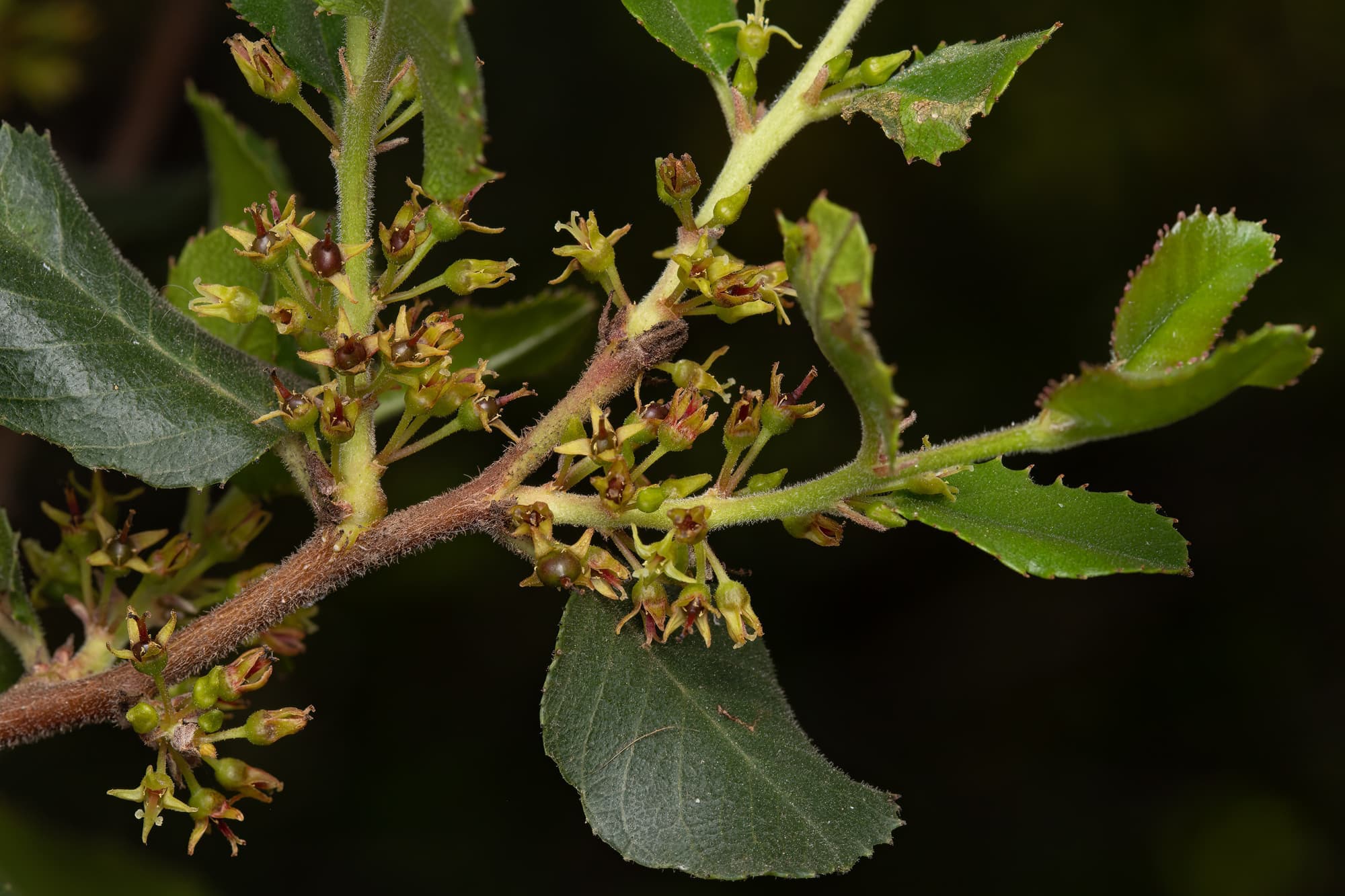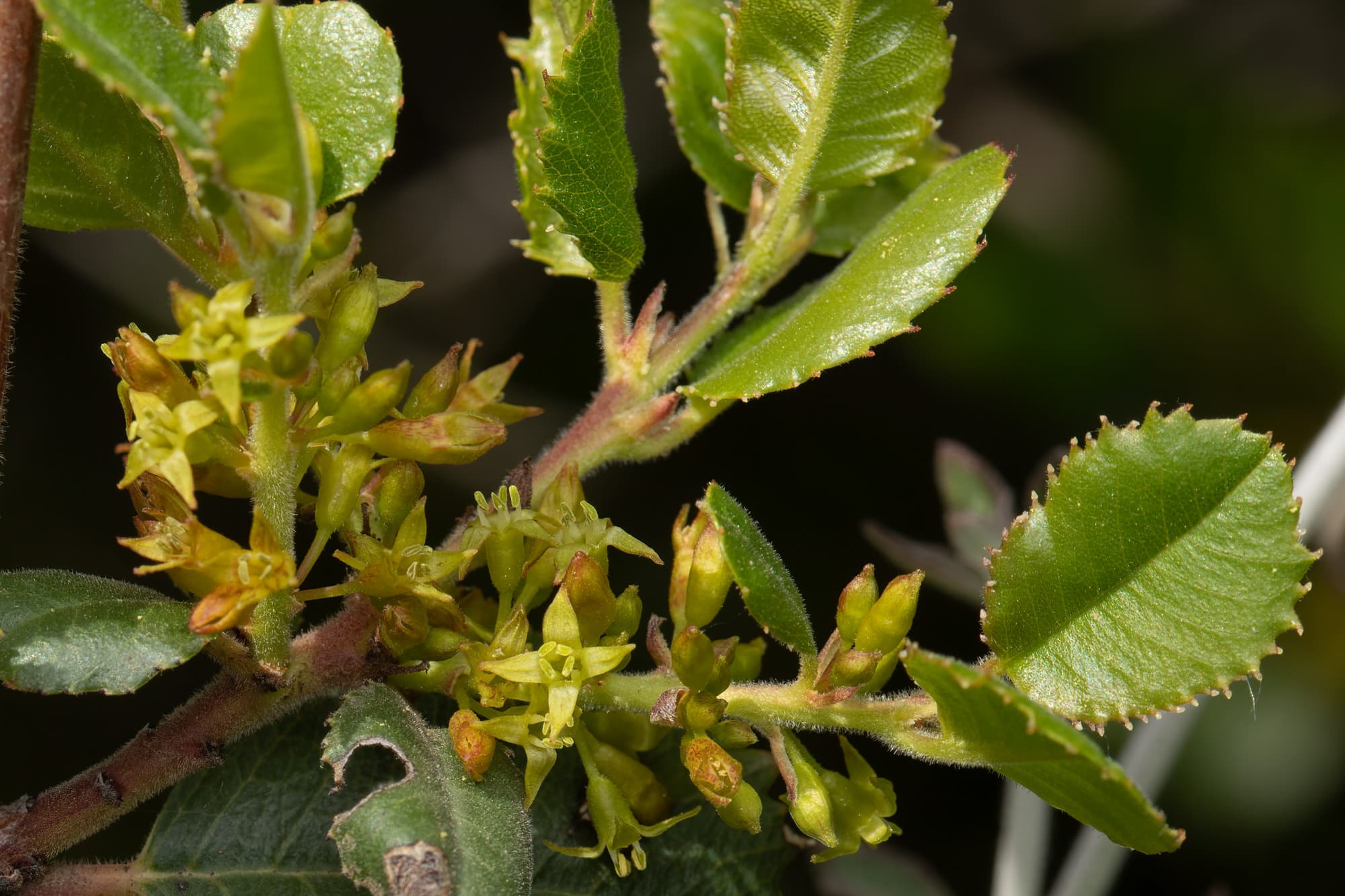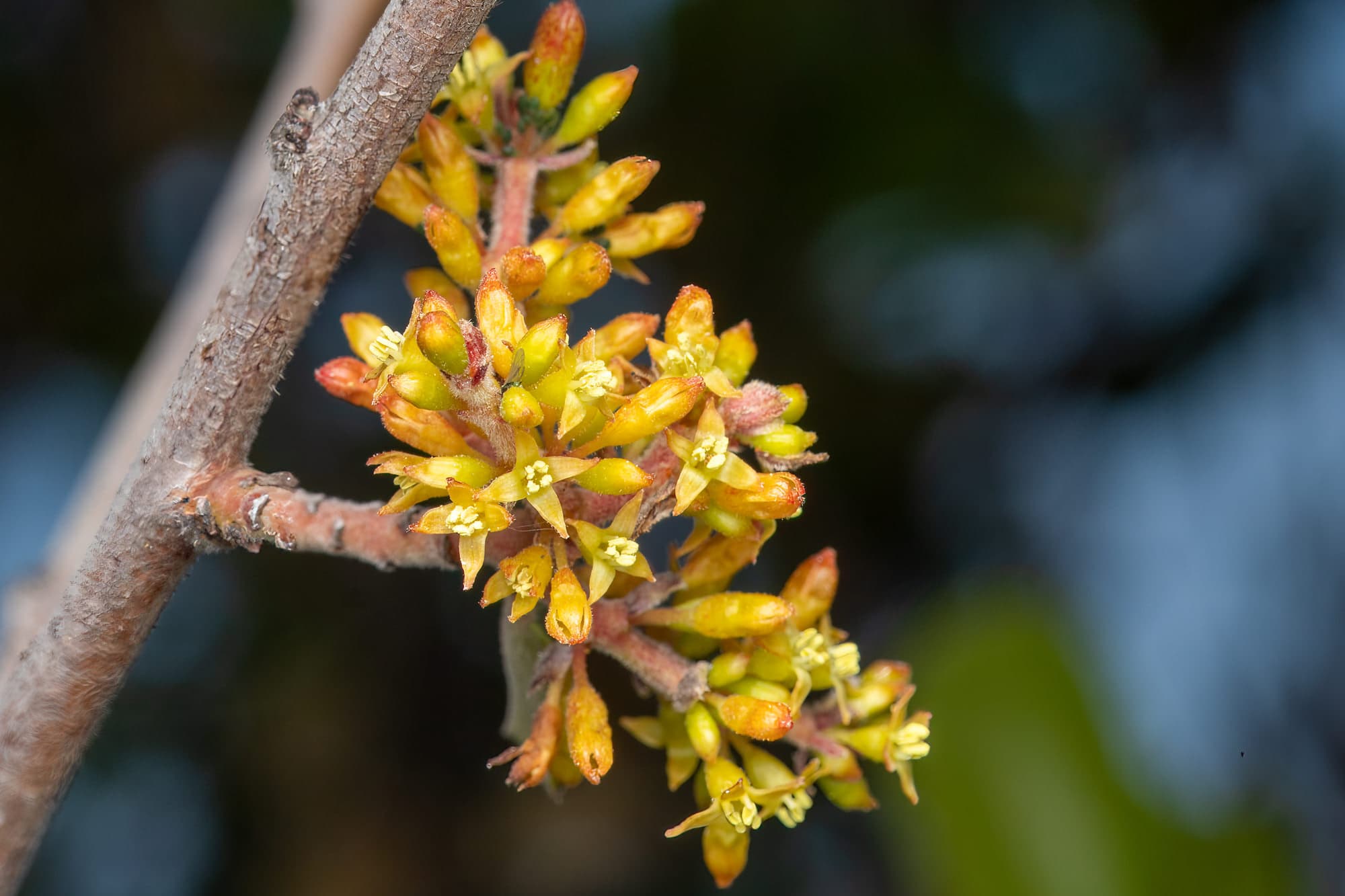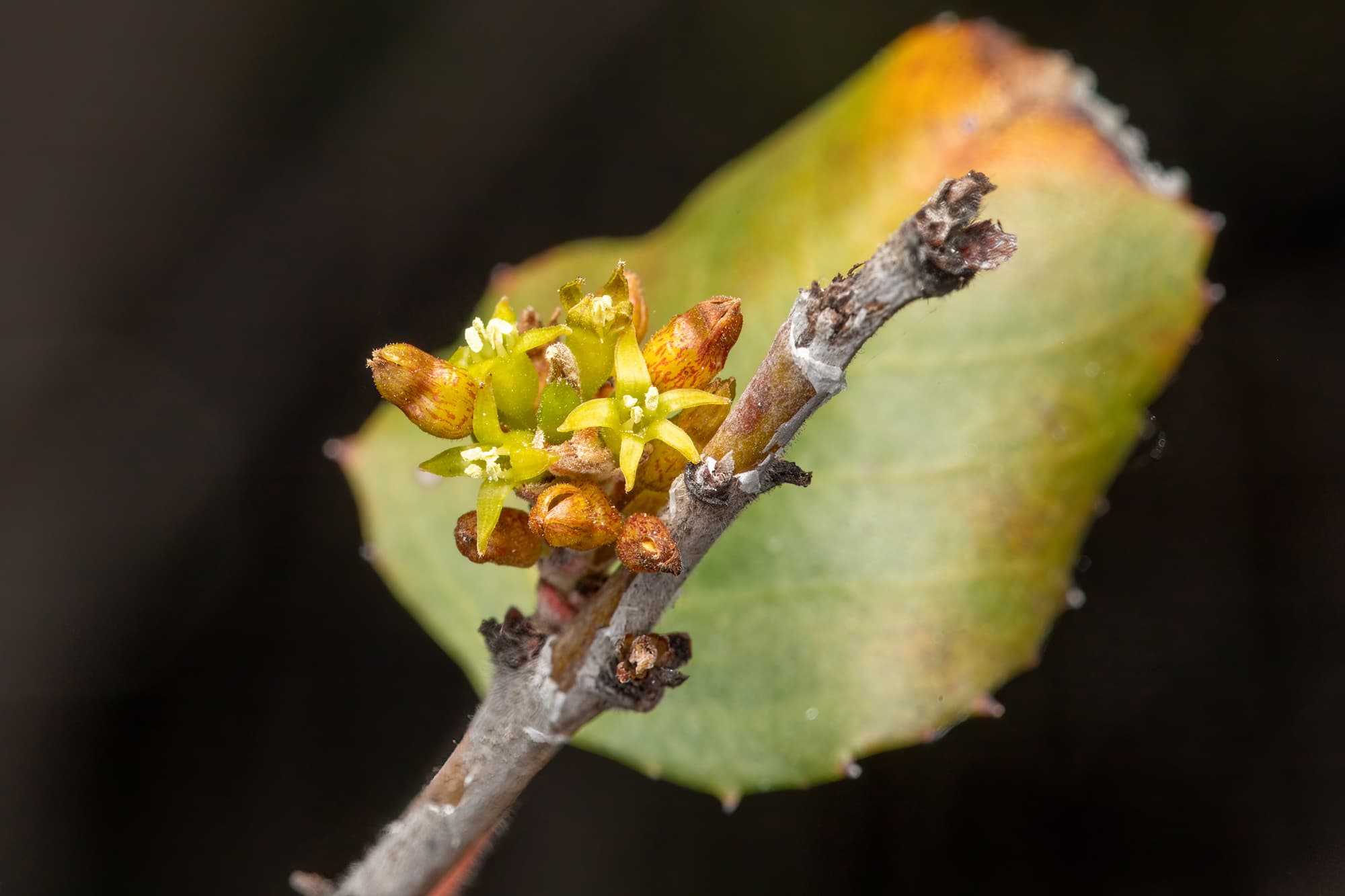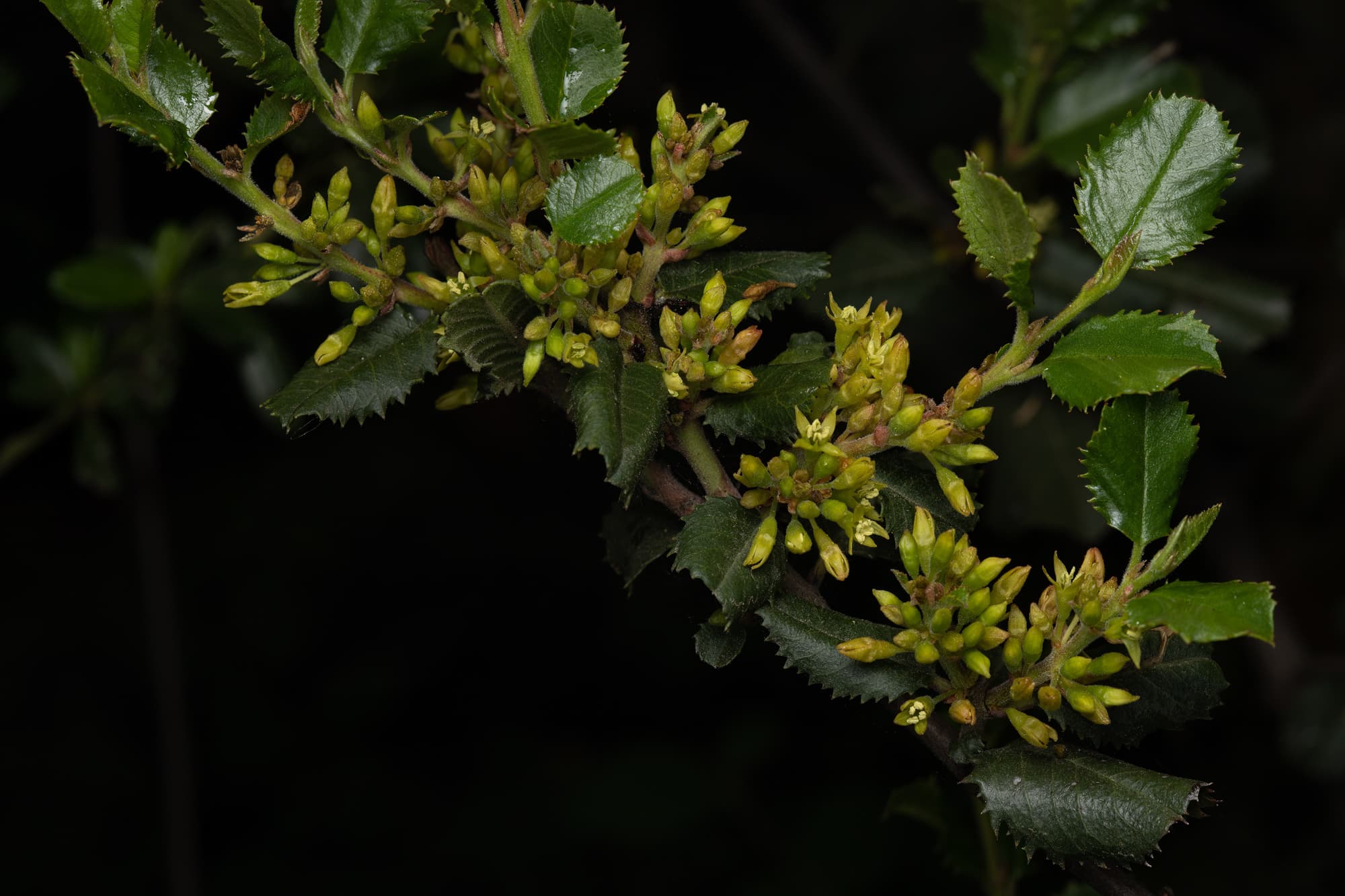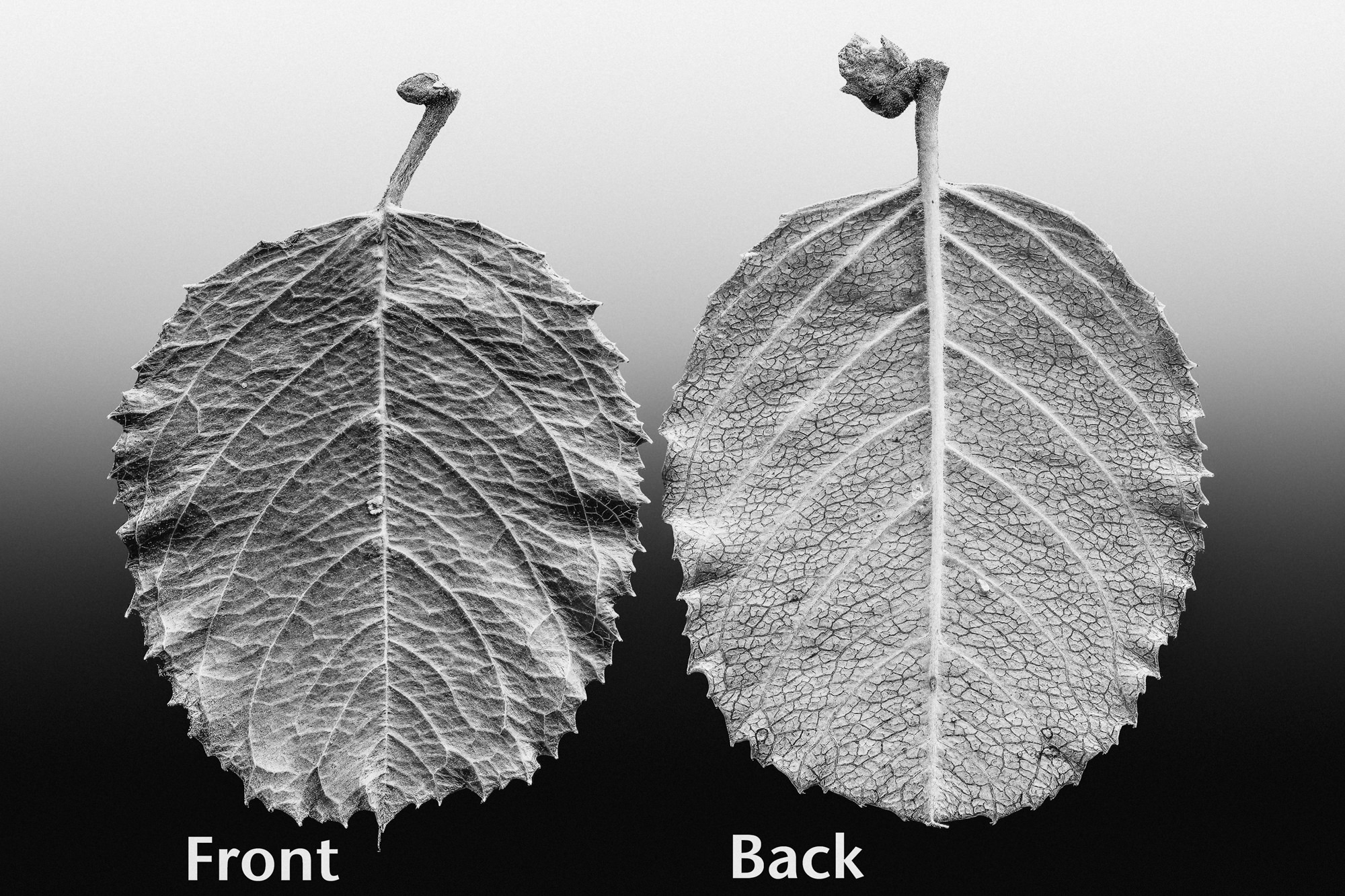Holly Leaf Red Berry
- Rhamnus ilicifolia
| Common Name(s): | Holly Leaf Red Berry |
| Scientific Name: | Rhamnus ilicifolia |
| Family: | Rhamnaceae (Buckthorn) |
| Plant Type: | Shrub |
| Size: | 4 feet to 14 feet |
| Habitat: | coastal sage and chaparral |
| Blooms: | February to April |
| Fire Response: | Stump Sprout or Seed |
Hollyleaf redberry (Rhamnus ilicifolia) is a native shrub that grows in the foothills and mountains of southern California at elevations from 500 - 6600 feet. It was formerly considered a subspecies of Rhamnus crocea (spiny leaf red berry) but is now considered a separate species. This shrub ranges from four to 13 feet tall. This plant is common alongside many trails and your ability to identify it shows that you are becoming more skilled observing our native plants! This shrub requires looking at the leaves, flowers and fruits before making an identification. Look for evergreen leaves with small fine teeth and a somewhat oval shape. Densely branched plants provide cover and food for a variety of wildlife. Lots of tiny flowers and small red berries make this plant a favorite of pollinators, birds and wood rats.
Similarities to other plants: A close observation reveals that spiny red berry - Rhamnus crocea has smaller leaves and fruit than holly leaf red berry. Visually, holly leaf red berry is more similar to holly leaf cherry (Prunus ilcifolia). Both of these species can be found sharing the same coastal sage or chaparral environments. Viewed side by side the plants have obvious differences: Shinier leaves and much larger fruits on holly leaf cherry, smaller fruits and duller leaves on holly leaf red berry. Scratch the bark on the holly leaf cherry and you may get a hint of bitter almond as hydrogen cyanide gas is released. More Detailed Info
After a fire, this plant vigorously crown sprouts and the seeds are known to readily re-sprout as well - giving the plant an advantage over other plants that lack this ability.
Flowers are small, lack petals (they do have sepals) and are greenish in color. The source I used indicates the plant is dioecious (separate male and female plants). Interestingly both plants have flower parts that do not work. Pollen is not produced on female plants and pistils do not mature on the make plants. Somehow it all works!
Leaves alternate on the stem and often are normally flat in shape before eventually curling under.
This plant is not too hard to grow on rocky slopes, or at least with rocks surrounding it. Preferring part shade in the drier parts of its range and able to tolerate summer water up to 1x per month. Once established, it's usually happiest without any supplementary water. Under ideal circumstances, it can grow from a 1 gallon container to 3 feet tall in 2 years producing beautiful red berries in the spring.
Link to Calflora.net - the best source of this fascinating information.
Name Origin: Rhamnus: an ancient Greek name for the buckthorn. The genus Rhamnus was published by Carl Linnaeus in 1753.
ilcifolia: having leaves like holly
Contributed by George Sherman
Featured Plants in the Rhamnaceae (Buckthorn) Family:
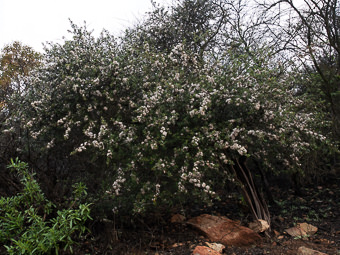
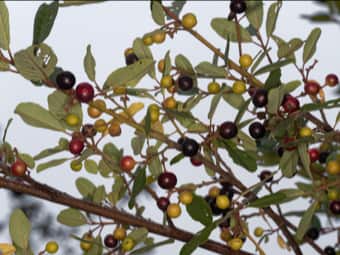
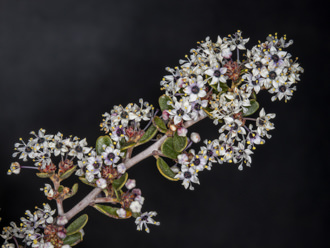
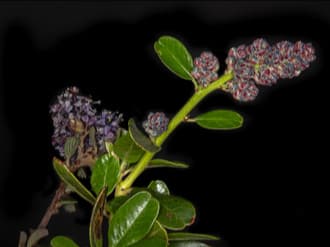
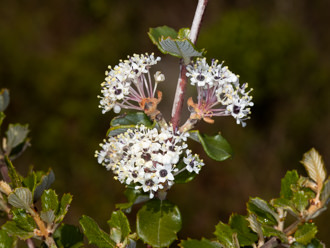
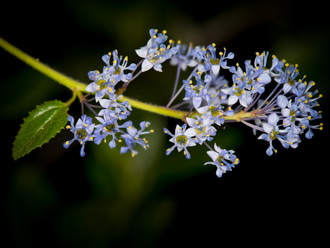
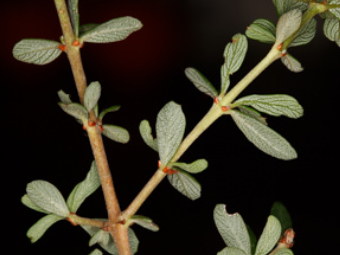
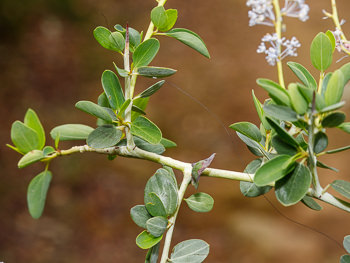
Last modified: August 21 2024 15:18:49.
Number of Images: 16
Image Size Total: 3,637,075
References:
Wildflowers of the Santa Monica Mountains, by Milt McAuleyFlowering Plants: The Santa Monica Mountains, Coastal and Chaparral Regions of Southern California, by Nancy Dale
Chumash Ethnobotany: Plant Knowledge Among the Chumash People, by Jan Timbrook
Leaf Shapes Primer - Botanical Terms for Leaves: - Link

